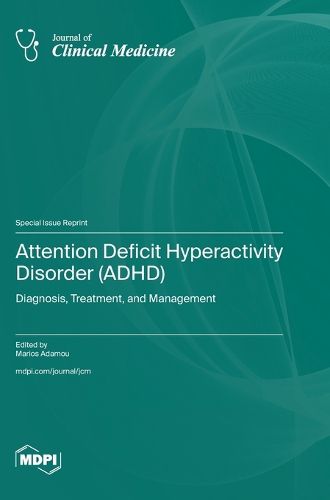Readings Newsletter
Become a Readings Member to make your shopping experience even easier.
Sign in or sign up for free!
You’re not far away from qualifying for FREE standard shipping within Australia
You’ve qualified for FREE standard shipping within Australia
The cart is loading…






This title is printed to order. This book may have been self-published. If so, we cannot guarantee the quality of the content. In the main most books will have gone through the editing process however some may not. We therefore suggest that you be aware of this before ordering this book. If in doubt check either the author or publisher’s details as we are unable to accept any returns unless they are faulty. Please contact us if you have any questions.
This reprint explores diverse dimensions of Attention-Deficit/Hyperactivity Disorder (ADHD), integrating cutting-edge research across clinical, neuropsychological, and psychosocial domains. It highlights innovative approaches to the diagnosis, treatment, and understanding of ADHD, offering a comprehensive perspective on this complex condition. The collection includes studies on psychotic-like experiences in ADHD, elucidating mechanisms such as rumination, trauma, and negative affect. The Creative Awareness Theory presents a novel perspective on inherent self-regulation among individuals with ADHD. Diagnostic advancements are represented by the Distractor-Embedded Auditory Continuous Performance Test, an objective tool that addresses challenges in ADHD assessment. Neurodevelopmental impairments are further explored in psychosomatic patients, while the "push-pull" mechanism of attention and emotion in children provides insights into behavioural dynamics. The prevalence and correlates of ADHD in adults with multiple sclerosis, as well as the link between ADHD and dyslipidaemia, highlight co-occurring conditions and their implications. Additional studies address the systematic stimulation of executive functions in ADHD populations, risks of premature discontinuation in opioid withdrawal treatment, and the development of female-specific ADHD treatment programmes. Predictive tools, such as a nomogram for identifying ADHD and ASD in child and adolescent mental health services, round out this multidisciplinary examination. This Special Issue serves as a valuable resource for clinicians, researchers, and practitioners aiming to advance the understanding and management of ADHD.
$9.00 standard shipping within Australia
FREE standard shipping within Australia for orders over $100.00
Express & International shipping calculated at checkout
This title is printed to order. This book may have been self-published. If so, we cannot guarantee the quality of the content. In the main most books will have gone through the editing process however some may not. We therefore suggest that you be aware of this before ordering this book. If in doubt check either the author or publisher’s details as we are unable to accept any returns unless they are faulty. Please contact us if you have any questions.
This reprint explores diverse dimensions of Attention-Deficit/Hyperactivity Disorder (ADHD), integrating cutting-edge research across clinical, neuropsychological, and psychosocial domains. It highlights innovative approaches to the diagnosis, treatment, and understanding of ADHD, offering a comprehensive perspective on this complex condition. The collection includes studies on psychotic-like experiences in ADHD, elucidating mechanisms such as rumination, trauma, and negative affect. The Creative Awareness Theory presents a novel perspective on inherent self-regulation among individuals with ADHD. Diagnostic advancements are represented by the Distractor-Embedded Auditory Continuous Performance Test, an objective tool that addresses challenges in ADHD assessment. Neurodevelopmental impairments are further explored in psychosomatic patients, while the "push-pull" mechanism of attention and emotion in children provides insights into behavioural dynamics. The prevalence and correlates of ADHD in adults with multiple sclerosis, as well as the link between ADHD and dyslipidaemia, highlight co-occurring conditions and their implications. Additional studies address the systematic stimulation of executive functions in ADHD populations, risks of premature discontinuation in opioid withdrawal treatment, and the development of female-specific ADHD treatment programmes. Predictive tools, such as a nomogram for identifying ADHD and ASD in child and adolescent mental health services, round out this multidisciplinary examination. This Special Issue serves as a valuable resource for clinicians, researchers, and practitioners aiming to advance the understanding and management of ADHD.